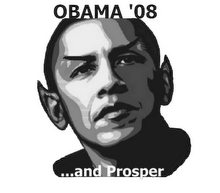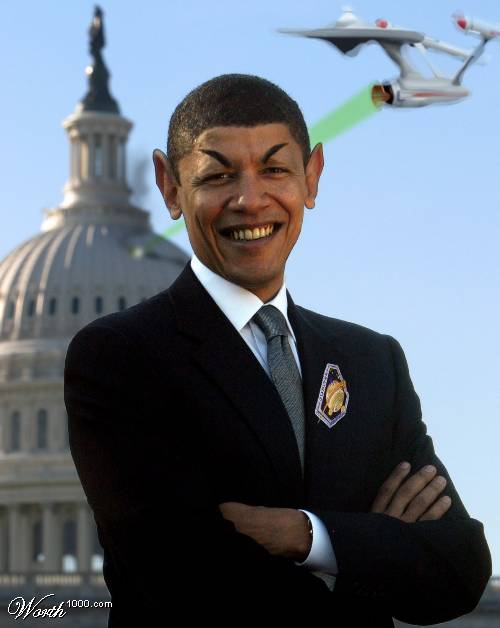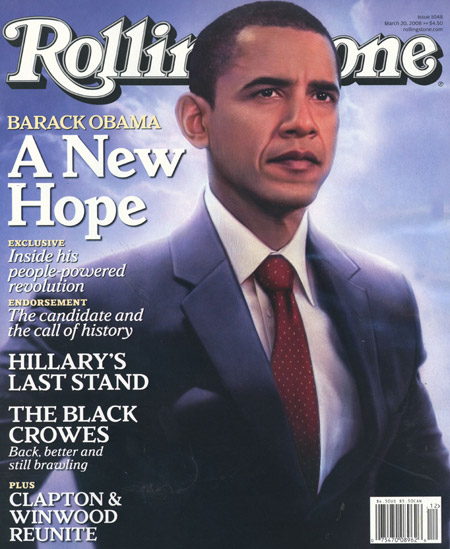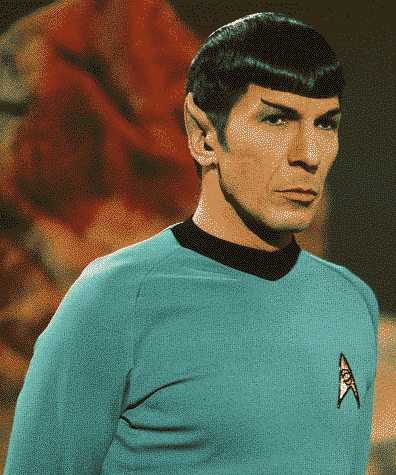Several years ago, I heard my colleague and friend Justine Cassell sum up what she had learned after more than a decade of tracking the lives of hundreds of young people from around the world she had been helping to facilitate through the Media Lab's Junior Summit. These young leaders had been working both face to face and via electronic communications to try to bring about changes in their society, focusing their energies on problems both local and global, and finding solutions through both policy and technology. Cassell is a linguist so one of the things that interested her was the language these young people used. Adult leaders, she suggested, tend to rely heavily on the first person pronoun: 'Here's what I will do for you', 'this is my position on the issues,' 'I have the experience needed to do the job.' By contrast, the youth leaders tended to deploy a third person language: 'what do we see as the problem here,' 'what do we want to do about It,' 'what are our goals for the next steps.' The young leaders were interested in the process as much as the product, trying to make sure that every perspective got heard and weighed appropriately before reaching a decision. They pooled information from multiple sources, valuing diversity of input because of what it would contribute to the final outcome.
All of this came back to me as I have been listening to Barrack Obama in recent weeks. Commentators have noted his tendency to use "We" far more often than first ("I")or second person ("You" pronouns, often with only minimal understanding of what is at stake in this language choice. Some of this no doubt emerges from Obama's experience as a community organizer, a very different role from Hillary Clinton's early experiences as a litigator or legal council for nonprofit organizations.
Obama has constructed not so much a campaign as a movement. Campaigns are very much top down organizations focused on short term results -- let's get this person elected president -- while movements are constructed bottom-up with more long-term goals -- let's reshape the American political landscape. What Obama has been building can last longer than the individual campaign because it is as much structured around connections between voters as it is around connections between the candidate and the electoriate. We see this in the use of MySpace, Facebook, and other social network sites, which both build on the set of social ties (of all kinds) that link voters together and also enables new people to get into contact with each other. I predicted in Convergence Culture that the parties and the political leaders were going to lose control of the campaign process in a world where the general public was increasingly taking media in its own hands. In a campaign season strongly influenced by grassroots media contributions, it is striking how many of the so-called "viral videos" -- from the 1984 ads and the Obama Girl spots through to the recent "Yes We Can" music video were dedicated to supporting Obama's efforts. Grassroots media makers seemed to be welcomed into the political process by Obama's staff and he seems to inspire more people to apply their craft as contributions to his efforts.
You see it in the contrast between Obama's embrace of Martin Luther King (himself a veteran of movement politics) who brought about change from below and Clinton's embrace of LBJ, a consummate political insider who brought about change from the top down.
There is a sharp contrast to be drawn here with the ways that Bill Clinton changed the language of American politics a decade ago when he embraced the informality and intimacy of the town hall meeting, stepping to the edge of the stage to get as close to the voter as possible, repeating their name as part of his responses, trying to forge links between his experience and theirs, and channeling their pain as he offered a more empathic version of old style policy wonkism. Clinton was praised for embracing and incorporating his questioners into the discourse of the campaign. Yet, the Clinton approach still was very much focused on the connections between the politician and the voters as individuals ("I feel your pain") and the recognition of a still tangible division between the two. This can be seen as the last gasp of a broadcast era model of the American public.
What Obama embodies is something different -- a networked model of the relations amongst all of us who are involved in the process of transforming American society. The differences between Obama and Clinton have less to do with issues of policy but rather differences in process, in notions of governance, in cultural style, though the subtle differences in policy may reflect differences on these other levels, as when Clinton wants to require everyone to buy health insurance (top-down) and Obama seeks to make insurance accessible to everyone (bottom up). Those of us who are passionate about Obama (and yes, I'm an Obama boy) are responding to an alternative vision of the country -- one based less on fragmentation around identity politics or partisan differences than one which values diversity of perspectives as opening up the possibility of refining our collective organization and enabling us to solve problems together which defeat us as individuals.
In this context, the fact that the vision is blurry and not yet well defined is a virtue rather than a limitation: it is a virtue if we set up processes which enable us to collaborate to find further solutions. I look on Obama's more vague statements as something like a stub on wikipedia -- an incitement for us to pool our insights and to work through a range of possible solutions together.
After eight years which have sought to revitalize the once discredited notion of an Imperial President, it is refreshing to imagine a more open, participatory, and bottom up process. In such a model, the experience of the leader is less important than the ability to channel all of those voices and the commitment to make sure that everyone is heard. This is like the difference between older notions of expertise (based on monopoly and control of information) and newer notions of collective intelligence (based on creating a self-correcting and inclusive process by which we collect, evaluate, and distribute knowledge.) This may be what commentators are groping towards when they talk about a generational shift or discuss Obama as the candidate of the future. It is certainly what is implied when Obama makes fun of the Clinton as wanting to build a bridge back to the 20th century, a comic reversal of the contrast they had set up a decade ago between the future-oriented Clinton and the backwards-leaning Dole. It may be this focus on a different kind of political process which resonates so strongly with younger voters who have, like those Cassell described, grown up in a networked culture and have developed different processes for working through problems together.
This is why Obama's "Yes, We Can" slogan resonates so powerfully. As Stephen Duncombe pointed out to me when we appeared on stage together recently at Otis College, the slogan comes from Cesar Chavez's migrant workers movement and thus can be understood cynically as an attempt to engage the Hispanic voters who have not yet embraced the Obama movement. Yet, Duncombe suggests, the music video based on this speech only uses the Spanish version one time and otherwise seeks to demonstrate the value of the concept to the society more generally. We can see this as a bottom-up contribution to a national discourse rather than as a localized appeal to identity politics.
When I first heard the "Yes We Can" speech, I was struck by the ways that Obama was linking his campaign to a range of other historic struggles for social justice, most of which are better captured by the image of bottom-up movements rather than top-down campaigns. (These aspects are accented even more fully in the Black Eye Peas music video, where Obama's lone voice is expanded through a singing chorus.) I was impressed with how he integrated those various fights together to offer a shared vision of America's past and future, breaking out of the more fragmented understanding of these incidents within different chapters of the history of specific minority groups. In many ways, his language recalls that of Walt Whitman whose Leaves of Grass sought to develop a synthetic construction of what America was like as a nation, linking together a range of individual experiences, memories, perspectives, sense impressions, to create a vision of the nation as one big organism. Here's Obama:
It was a creed written into the founding documents that declared the destiny of a nation.
Yes we can.
It was whispered by slaves and abolitionists as they blazed a trail toward freedom.
Yes we can.
It was sung by immigrants as they struck out from distant shores and pioneers who pushed westward against an unforgiving wilderness.
Yes we can.
It was the call of workers who organized; women who reached for the ballots; a President who chose the moon as our new frontier; and a King who took us to the mountaintop and pointed the way to the Promised Land.
Yes we can to justice and equality.
Yes we can to opportunity and prosperity.
Yes we can heal this nation.
Yes we can repair this world.
Yes we can.
Here's Whitman from Leaves of Grass:
We wield ourselves as a weapon is wielded,
We are powerful and tremendous in ourselves,
We are executive in ourselves—we are sufficient
in the variety of ourselves...
These States are the amplest poem,
Here is not merely a nation, but a teeming nation
of nations,
Here the doings of men correspond with the
broadcast doings of the day and night,
Here is what moves in magnificent masses, care-
lessly faithful of particulars,
Here are the roughs, beards, friendliness, com-
bativeness, the soul loves,
Here the flowing trains, here the crowds, equality,
diversity, the soul loves.
Race of races, and bards to corroborate!...
Weather-beaten vessels, landings, settlements, the
rapid stature and muscle,
The haughty defiance of the Year 1—war, peace,
the formation of the Constitution,
The separate States, the simple, elastic scheme,
the immigrants,
The Union, always swarming with blatherers, and
always calm and impregnable,
The unsurveyed interior, log-houses, clearings,
wild animals, hunters, trappers;
Surrounding the multiform agriculture, mines,
temperature, the gestation of new States,
Congress convening every December, the mem-
bers duly coming up from the uttermost
parts;
Surrounding the noble character of mechanics and
farmers, especially the young men,
Responding their manners, speech, dress, friend-
ships -- the gait they have of persons who
never knew how it felt to stand in the
presence of superiors,
The freshness and candor of their physiognomy, the
copiousness and decision of their phrenology,
The picturesque looseness of their carriage, their
deathless attachment to freedom, their fierce-
ness when wronged,
The fluency of their speech, their delight in
music, their curiosity, good-temper, open-
handedness,
The prevailing ardor and enterprise, the large
amativeness,
The perfect equality of the female with the male,
the fluid movement of the population,
The superior marine, free commerce, fisheries,
whaling, gold-digging,
Wharf-hemm'd cities, railroad and steamboat lines,
intersecting all points,
Factories, mercantile life, labor-saving machinery,
the north-east, north-west, south-west,
Manhattan firemen, the Yankee swap, southern
plantation life,
Slavery, the tremulous spreading of hands to
shelter it -- the stern opposition to it, which
ceases only when it ceases.
For these, and the like, their own voices! For
these, space ahead!
Writing at a time the union was still in crisis, Whitman constructs a unified vision of America, one which may seem overly nationalistic by modern standards, but one which sought to be inclusive of many different kinds of Americans. Obama is charting a map of the future by mobilizing what is most valuable, most precious in the nation's past. In doing so, he is constructing a shared mythology which speaks to us across historic divides in our national consciousness. Nothing could be further removed, say, than Edward's talk of 'Two Americas.' In Obama's version, there are at once many Americas, each self contradictory and refusing to be reduced to stereotypes, and one America, a collective intelligence ready to process all of that diversity and arrive at shared solutions to shared problems. Obama is speaking for this 'we generation' in the closing moments of that speech:
We know the battle ahead will be long, but always remember that no matter what obstacles stand in our way, nothing can stand in the way of the power of millions of voices calling for change.
........... We've been asked to pause for a reality check. We've been warned against offering the people of this nation false hope.
But in the unlikely story that is America, there has never been anything false about hope.
Now the hopes of the little girl who goes to a crumbling school in Dillon are the same as the dreams of the boy who learns on the streets of LA; we will remember that there is something happening in America; that we are not as divided as our politics suggests; that we are one people; we are one nation; and together, we will begin the next great chapter in the American story with three words that will ring from coast to coast; from sea to shining sea --
Yes. We. Can.
Think of the speech as a mash-up of JFK, RFK, Ceasar Chavez, and Walt Whitman, delivered with the candences of Martin Luther King. Think of it as thus a new synthetic mythology for a new kind of knowledge culture. It may be the most powerful remobilization of historical and contemporary perspectives since the Popular Front movement of the 1930s. The music of Aaron Copeland, the art of Norman Rockwell, the films of Frank Capra were unafraid to mobilize historical images towards constructing a contemporary model of our shared experiences. We can criticize that model today for who and what it excluded, yet most of us are still touched by the emotions embodied in that art.
My hope is that Obama's rhetoric may evoke a similar response in future generations and in that sense, it will be, to use a word Obama likes to talk about, 'transformative.' Historians regard the campaign of Barry Goldwater as 'transformative' in that sense -- transforming the directions of American politics, paving the way towards the modern conservative movement and the so-called 'Reagan Revolution' even in defeat. As an Obama supporter, I certainly hope that this new movement achieves its immediate political goals but my sense is that as a movement which is larger than the individual candidate it paves the way for a modern progressive movement.
This is certainly what I felt as I stood in the freezy cold with some 8000 other Obama supporters in Boston on the eve of Super Tuesday, an experience which gives new reality to the news report of turnouts across the country as this candidate has addressed the public. Then consider that few of those people were there because of mainstream media coverage; most were there because of text messages, social network sites, e-mails, blogs, podcasts, and cellphone calls. They weren't there because of a message broadcast from above; they were there because someone they knew within their existing social networks contacted them and encouraged them to come. My wife and I were among the oldest people there; the hall was packed by young people, many of whom had never voted before.
This is what politics looks like within the 'we generation.' This is what politics looks like to "We The People," circa 2008.
Editor's Note: I have from the first chosen not to take partisan positions through this blog, hoping to reach out to conservative, libertarian, and independent readers. I have taken stances on particular policy issues which deal with the communications infrastructure and I have tried to frame these in ways that include rather than exclude those with other political perspectives. I don't see this post as representing a change of these policies. I just felt that there was something that needed to say about the intersection between Obama's style of campaigning and my own work on participatory culture. I express above my support for Obama in the name of full disclosure and not out of an effort to get any of my readers to change their minds about the candidates. I do hope, however, that any of you who are American citizens will exercise your right to vote.








